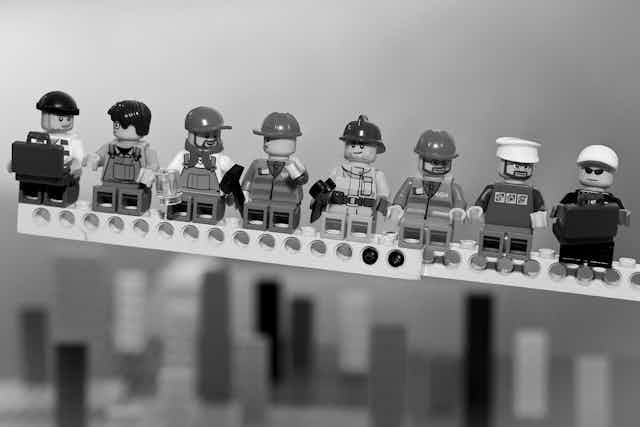This year marks the 135th Labor Day, a holiday that began with workers going on strike in New York City just to get a day off.
Workers no longer have to strike to enjoy the first Monday in September with their families, yet for many it’s no different from any other weekday, particularly for those who work in the shops showcasing Labor Day bargains. Indeed the national holiday has in many ways become more about shopping than honoring the workers who had to fight so hard to secure rights such as a 40-hour workweek.
In recent decades, the unions that helped them win those battles have lost much of their influence, a trend some have tied to the stagnation in wages and rising income inequality.
Last year, we published a series of articles on unions – their decline and why they still matter. To celebrate Labor Day, here are highlights from that series as well as from our more recent coverage.
Why unions matter
Jake Rosenfeld, a sociologist at the University of Washington, launched the series with an article that chronicled the rise and fall of labor unions and discussed why they still matter and how their decline has been a primary cause of the rise in inequality.
“At its peak, the US labor movement stood alongside powerful business leaders and policymakers as key institutions shaping the nation’s economy and polity. Union workers enjoyed healthy union "wage premiums,” or increases in pay resulting directly from working under a union-negotiated contract.“
Peter Lazes and Andrew Crook of Cornell examined the role unions play in making companies more competitive and profitable, all while lifting wages and bolstering the economy.
"The demise of U.S. labor would mean not only the end to resources to help rebuild our economy and reduce inequalities but also the capacity for management to draw on the deep knowledge of frontline staff. That’s a partnership that has led to prosperity for both workers and their employers.”
Changing rules
The Obama administration recently passed new overtime rules entitling more workers to overtime pay. Thomas More Smith of Emory University explains what they mean for workers and employers.
“Companies have a lot of flexibility when dealing with changes like this and can find ways to turn them to their advantage.”
Right-to-work (RTW) laws that allow workers at unionized companies to avoid paying dues have spread across the country. Roland Zullo of the University of Michigan argues they allow more workers to freeload – getting the benefits of unions without supporting them.
“One way to understand the real intent of RTW is to imagine what would happen to the public services in one’s town, city or state if the payment of taxes were voluntary. How long would our public schools, libraries, sanitation systems, water facilities, parks and so forth function if taxes were optional?”
A revival?
University of Oregon historian Bob Bussel believes that the rebirth of the Progressive Era offers hope that organized labor can regain its strength.
“In spite of the many challenges it faces, the union movement has consistently "punched above its weight” in the political arena and will participate aggressively in 2016 politics with both money and member mobilization. Indeed, continuing social agitation around inequality will occupy center stage during the 2016 election and provide unions and their allies the opportunity to demand explicit commitments from politicians to address these concerns.“
And in light of the worker rage on the campaign trail, Thomas Kochan of MIT Sloan explains how it can be transformed into better jobs and wages.
"Angry rhetoric will not put the economy on a path that works for the disaffected and disenfranchised. Instead we need to address the root causes of workers’ frustration and their economic decline. And to do that, I would argue, we need to fix our broken labor policy.”

